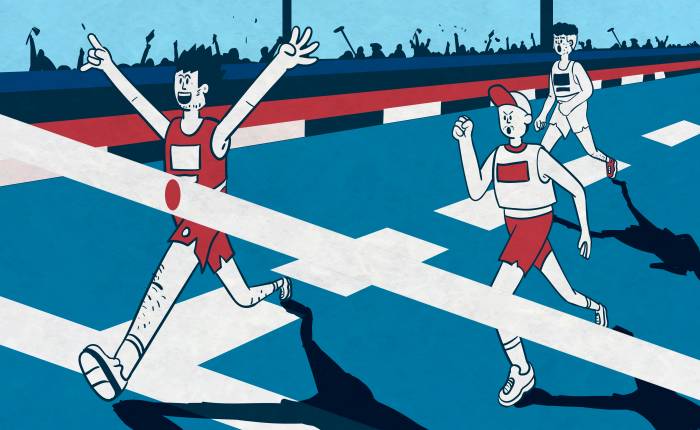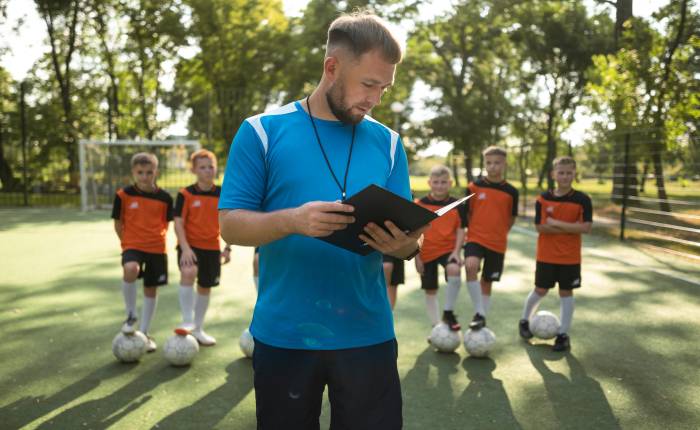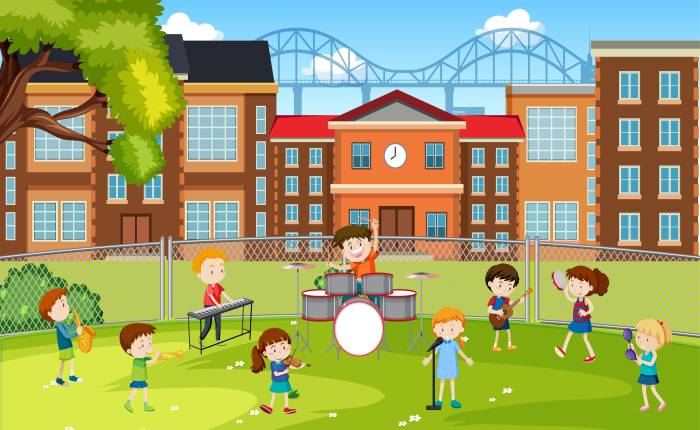Sports complex facilities offer big fun and top value. Find out why people love them and how they improve play. Click now to see what’s inside.
Understanding What a Sports Complex Is
A sports complex is a dedicated area with multiple sports facilities in one location. These places are built to provide access to various athletic and recreational activities for people of all ages. They are often found in cities, towns, schools, and even corporate campuses.
These complexes are designed to support team sports, individual workouts, and community events. Facilities within a sports complex usually include soccer fields, basketball courts, tennis courts, swimming pools, and more.
Below is a table showing the common components found in a standard sports complex:
| Facility | Purpose | Example Use |
| Soccer Field | Team Sports | Soccer leagues, practice |
| Indoor Gymnasium | Multipurpose Activities | Basketball, volleyball |
| Swimming Pool | Aquatic Activities | Swim lessons, competitions |
| Fitness Center | Personal Training | Weightlifting, cardio |
| Running Track | Athletic Training | Running events, workouts |
A sports complex provides a central space where people can stay active and healthy. It encourages community bonding and promotes a healthy lifestyle through various physical activities.
History and Evolution of Sports Complexes

The concept of the sports complex goes back to ancient civilizations. The Greeks and Romans had large stadiums and open fields for sporting events. These spaces were public gathering areas where sports and entertainment brought people together.
Modern sports complexes evolved with urban planning and the growth of organized sports. Governments and private companies started to build facilities that could host many events at once. This helped to manage resources better and support local communities.
Over time, technology improved the way these complexes were built. Stronger materials, better lighting, and advanced turf options allowed for year-round usage. Some sports complexes even have climate control and high-tech scoreboards.
The sports complex has become more than just a place to play. It is now a hub for fitness, recreation, and social connection.
Types of Sports Complexes

There are several types of sports complexes, depending on their size, purpose, and the activities they support. Each type serves a different audience and may include specific equipment or layouts.
Some are built indoors to allow year-round use, while others are outdoor for larger fields and natural play. Mixed-use complexes combine both and are very common in cities and schools.
Here’s a table highlighting types of sports complexes and what they typically include:
| Type of Complex | Key Features | Common Users |
| Indoor Sports Complex | Climate control, gyms, courts | Schools, athletes |
| Outdoor Sports Complex | Fields, tracks, open-air courts | Teams, public programs |
| Multi-purpose Complex | Mix of indoor and outdoor facilities | Community events, schools |
| Specialized Complex | Built for one or two sports | Professional teams |
| Recreational Complex | Focus on fun and wellness | Families, casual users |
The type of sports complex you choose depends on your needs. Whether you’re training for a competition or just enjoying a game with friends, there is a facility that fits your goals.
Facilities Found in a Sports Complex
A sports complex includes many different facilities to support various activities. The design depends on the size and purpose of the complex. However, most share some common spaces.
Indoor spaces usually include basketball courts, volleyball courts, and gyms. Outdoor areas often feature soccer fields, baseball diamonds, and tennis courts. Some complexes even have swimming pools, climbing walls, and skating rinks.
Fitness centers within a sports complex are also popular. They offer cardio equipment, weight machines, and personal training spaces. These help people stay active and reach fitness goals.
The variety of facilities in a sports complex makes it a one-stop location for physical activities. People of all ages and skill levels can find something that suits them.
Benefits of Visiting a Sports Complex

A sports complex provides many physical, mental, and social benefits. It supports health, wellness, and community interaction through its wide range of facilities.
Here is a table outlining the key benefits:
| Benefit | Description |
| Physical Health | Encourages regular exercise |
| Mental Health | Reduces stress and boosts mood |
| Social Engagement | Brings people together through activities |
| Skill Development | Offers practice areas for improvement |
| Community Involvement | Hosts events that unite local residents |
Regular visits to a sports complex improve cardiovascular health and muscle strength. A positive environment also helps reduce stress and improve mental well-being.
People build friendships, join teams, and attend community events in these facilities. A sports complex truly enriches lives in many ways.
Design and Planning of a Sports Complex
Designing a sports complex takes careful planning. Architects and engineers must consider the needs of the users, the location, and the available budget. The aim is to design an environment that is welcoming and useful.
The layout of the complex must allow for easy movement between areas. Fields and courts should be spaced out to prevent interference. Accessibility for people with disabilities is also a major concern.
Sustainability is becoming a key factor in design. Many new sports complexes use solar power, recycled materials, and water-saving systems. These choices reduce the environmental impact and cut down on operating costs.
With the right planning, a sports complex can become a lasting asset for any community.
Sports Complex for Schools and Universities
Educational institutions benefit greatly from having a sports complex on campus. These facilities support student-athletes and promote healthy habits among the student body.
A school sports complex might include gyms, tracks, courts, and pools. Colleges often have larger complexes that host tournaments and training sessions for professional-level athletes.
Physical education classes, after-school activities, and team practices take place in these spaces. They also help schools organize intramural sports and community programs.
The presence of a sports complex boosts school spirit and brings students together. It adds value to education by encouraging teamwork, leadership, and wellness.
Sports Complexes for Community Use
Many towns and cities build sports complexes for public use. These community facilities are open to everyone and serve as hubs for local sports and wellness programs.
Such complexes may be managed by parks and recreation departments or nonprofit groups. They offer access to leagues, classes, and open-play times for all age groups.
Community sports complexes are important for youth development. Kids can join soccer, basketball, and tennis programs in a safe and structured environment.
These complexes also host charity runs, festivals, and health events. A well-managed sports complex brings people together and improves community life.
Professional-Level Sports Complexes
A professional sports complex is designed to host elite athletes and major competitions. These complexes are often used by national teams, leagues, or private clubs.
They have world-class facilities like Olympic pools, advanced gyms, and regulation-size fields. Seating for spectators, media booths, and hospitality areas are also included.
Many pro sports complexes have training centers, locker rooms, and recovery facilities. These help athletes maintain top performance and reduce injury risk.
These complexes also generate economic value. They attract fans, create jobs, and bring prestige to the host city. A professional sports complex is a key part of modern sports culture.
Technology in Modern Sports Complexes
Technology is changing how a sports complex operates. Today’s facilities use smart systems to manage lighting, climate, and security. This helps reduce costs and improve user comfort.
Digital scoreboards, online booking systems, and mobile apps make the experience better for visitors. Some sports complexes even offer virtual coaching or fitness tracking features.
Advanced turf systems and LED lighting make play areas safer and more efficient. Surveillance cameras and emergency systems improve safety for everyone on-site.
The use of technology makes a sports complex more modern, reliable, and enjoyable for users of all ages.
Challenges Faced by Sports Complexes
Running a sports complex comes with several challenges. High maintenance costs, staffing needs, and wear-and-tear are just a few of them. Budget planning is critical to keep operations smooth.
Weather can affect outdoor sports areas, requiring special care. Indoor spaces need regular cleaning and equipment maintenance. Staff training is key for safety and customer service.
Another challenge is ensuring access and inclusion. A good sports complex must be available to people of all abilities and backgrounds.
Despite the challenges, a well-run sports complex is a valuable asset. With the right support, these facilities can serve the community for many years.
Future of Sports Complexes
The future of the sports complex is bright. As fitness and wellness become more important, demand for these facilities continues to grow. New designs and technology will shape the next generation of complexes.
Trends include green building practices, hybrid indoor-outdoor designs, and digital features like smart sensors. Facilities will also be more inclusive, offering spaces for all ages and needs.
Partnerships with health centers, schools, and tech firms will make sports complexes more powerful than ever. These spaces will not just serve athletes but promote a full wellness lifestyle.
In the future, a sports complex will be at the heart of every healthy and connected community.
Conclusion
A sports complex is more than just a place to play sports. It is a center for health, learning, and community life. With multiple facilities under one roof, these complexes offer something for everyone.
From youth programs to professional training, a sports complex supports physical and mental well-being. It connects people through shared activities and builds a stronger, healthier society.
Whether you’re an athlete, a parent, or just looking for a place to stay active, the sports complex is a space where everyone belongs.
✅ FAQs.
Q1: What is a sports complex?
A sports complex is a large area with different spaces for playing sports. It has courts, fields, gyms, and tracks in one place for everyone to use.
Q2: How does a sports complex help athletes?
A sports complex gives athletes great training spots. They can use high-quality gear and play with others to get better at their favorite sports.
Q3: Why is a sports complex good for kids?
A sports complex helps kids stay active, meet friends, and play safely. It’s made for fun and helps them learn sports the easy and right way.
Q4: Are there free sports complex events?
Yes, some sports complex centers hold free events. They give people a chance to try sports or join games without paying money.
Q5: What should I wear to a sports complex?
Wear comfortable sports clothes, like a T-shirt, shorts, and sneakers. It’s best to dress right to stay safe and enjoy your time at the sports complex.








